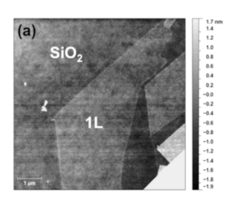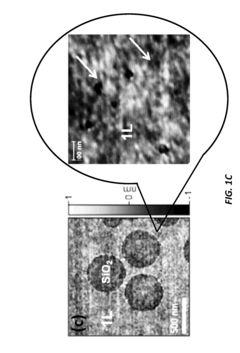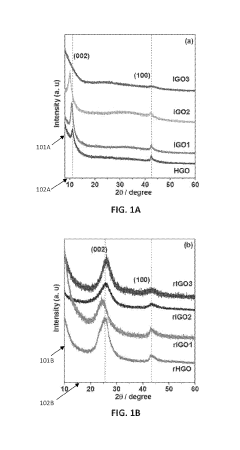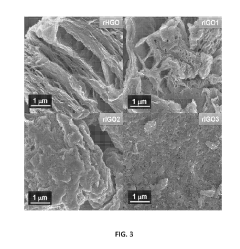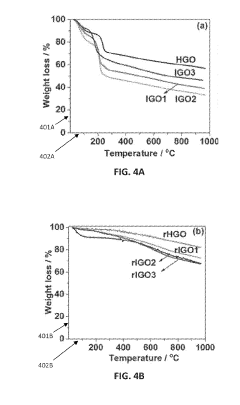How to Propel Energy Conversion Efficiency with Graphene Oxide?
Graphene Oxide Energy Conversion Background
Graphene oxide (GO) has emerged as a revolutionary material in the field of energy conversion, offering unprecedented potential to enhance efficiency across various applications. This two-dimensional carbon-based nanomaterial, derived from the oxidation of graphite, possesses unique properties that make it particularly suitable for energy-related technologies.
The journey of graphene oxide in energy conversion began with the discovery of graphene in 2004 by Andre Geim and Konstantin Novoselov, who were later awarded the Nobel Prize in Physics for their groundbreaking work. Since then, researchers have been exploring the vast potential of graphene and its derivatives, including graphene oxide, in various fields, with energy conversion being one of the most promising areas.
Graphene oxide's exceptional properties, such as high surface area, excellent electrical conductivity, and tunable electronic structure, have made it an attractive candidate for improving energy conversion efficiency. Its ability to be easily functionalized and integrated into various materials has opened up new avenues for enhancing the performance of energy conversion devices.
In recent years, the focus on graphene oxide for energy conversion has intensified due to the growing global demand for clean and efficient energy solutions. The material has shown remarkable potential in applications such as solar cells, fuel cells, batteries, and supercapacitors, where it can significantly improve energy conversion and storage capabilities.
The technological evolution in this field has been driven by the need to overcome the limitations of traditional materials and meet the increasing energy demands of modern society. Graphene oxide's unique properties allow for the development of more efficient and sustainable energy conversion systems, addressing key challenges in the renewable energy sector.
As research progresses, scientists and engineers are exploring novel ways to harness the full potential of graphene oxide in energy conversion. This includes developing new synthesis methods, optimizing material properties, and creating innovative device architectures that leverage the unique characteristics of graphene oxide.
The ongoing efforts to improve energy conversion efficiency using graphene oxide are part of a broader trend towards sustainable and high-performance energy technologies. As the world transitions towards cleaner energy sources, the role of advanced materials like graphene oxide becomes increasingly critical in achieving higher efficiencies and reducing environmental impact.
Market Analysis for Graphene Oxide Applications
The market for graphene oxide applications is experiencing rapid growth, driven by the material's exceptional properties and its potential to revolutionize various industries. Graphene oxide, a derivative of graphene, has garnered significant attention due to its unique combination of electrical, thermal, and mechanical properties, making it particularly attractive for energy conversion applications.
In the energy sector, graphene oxide is poised to make substantial contributions to improving energy conversion efficiency. The global push for cleaner and more sustainable energy sources has created a fertile ground for innovative materials like graphene oxide. Its ability to enhance the performance of solar cells, fuel cells, and energy storage devices has positioned it as a key player in the renewable energy market.
The solar energy industry, in particular, has shown keen interest in graphene oxide applications. The material's high transparency and conductivity make it an excellent candidate for improving the efficiency of photovoltaic cells. Market analysts project that the integration of graphene oxide in solar panels could lead to a significant increase in energy conversion rates, potentially reducing the cost per watt of solar power and accelerating the adoption of solar energy worldwide.
In the realm of energy storage, graphene oxide is making waves in the development of next-generation batteries and supercapacitors. The material's large surface area and excellent electrical properties enable the creation of high-capacity, fast-charging energy storage devices. This has caught the attention of electric vehicle manufacturers and portable electronics producers, who are constantly seeking ways to improve battery performance and reduce charging times.
The fuel cell market is another area where graphene oxide is expected to make a significant impact. By enhancing the catalytic activity and durability of fuel cell components, graphene oxide could help overcome some of the key challenges facing widespread fuel cell adoption, such as cost and longevity.
Market research indicates that the Asia-Pacific region, particularly China and South Korea, is leading in terms of graphene oxide research and development for energy applications. However, North America and Europe are also investing heavily in this technology, recognizing its potential to address energy challenges and drive innovation in their respective markets.
As the demand for more efficient energy conversion technologies continues to grow, the market for graphene oxide applications is expected to expand significantly. Industry experts anticipate that advancements in manufacturing processes will lead to reduced production costs, further accelerating market growth and adoption across various energy-related sectors.
Current Challenges in Graphene Oxide Energy Conversion
Despite the promising potential of graphene oxide (GO) in energy conversion applications, several significant challenges currently hinder its widespread adoption and optimal performance. One of the primary obstacles is the inconsistent quality and reproducibility of GO materials. The synthesis process, including oxidation methods and reduction techniques, greatly influences the final properties of GO, leading to variations in performance across different batches and studies.
Another major challenge lies in the scalability of GO production. While laboratory-scale synthesis can yield high-quality GO, translating these processes to industrial scales while maintaining consistent quality and properties remains a significant hurdle. This scaling issue directly impacts the cost-effectiveness and commercial viability of GO-based energy conversion technologies.
The stability of GO in various operating conditions poses another critical challenge. GO's tendency to agglomerate and its sensitivity to environmental factors such as temperature, pH, and humidity can compromise its long-term performance and reliability in energy conversion devices. Addressing these stability issues is crucial for developing durable and efficient GO-based systems.
Furthermore, the complex nature of GO's structure and its interaction with other materials in composite systems presents difficulties in optimizing energy conversion efficiency. The presence of oxygen-containing functional groups, while beneficial for some applications, can hinder electron transport and reduce overall conductivity, which is crucial for many energy conversion processes.
The integration of GO into existing energy conversion technologies and devices also poses significant engineering challenges. Developing effective methods for incorporating GO into electrodes, membranes, and other components while maintaining its unique properties and ensuring compatibility with other materials is an ongoing area of research and development.
Additionally, there is a lack of standardized characterization and testing protocols for GO materials in energy conversion applications. This absence of uniformity makes it challenging to compare results across different studies and hinders the systematic improvement of GO-based technologies.
Lastly, the environmental impact and potential toxicity of GO production and usage remain areas of concern. Addressing these issues is crucial for the sustainable development and widespread adoption of GO in energy conversion applications, particularly as the scale of production and utilization increases.
Existing Graphene Oxide Energy Solutions
01 Graphene oxide-based energy conversion devices
Graphene oxide is utilized in various energy conversion devices to enhance efficiency. Its unique properties, such as high surface area and excellent conductivity, make it suitable for applications in solar cells, fuel cells, and batteries. The incorporation of graphene oxide in these devices can lead to improved energy conversion rates and overall performance.- Graphene oxide-based energy conversion devices: Graphene oxide is utilized in various energy conversion devices to enhance efficiency. Its unique properties, such as high surface area and excellent electrical conductivity, make it suitable for applications in solar cells, fuel cells, and batteries. The incorporation of graphene oxide in these devices can lead to improved energy conversion rates and overall performance.
- Graphene oxide modification techniques: Various modification techniques are employed to enhance the energy conversion efficiency of graphene oxide. These methods include doping, functionalization, and composite formation. Such modifications can alter the electronic structure, increase active sites, and improve charge transfer properties, ultimately leading to better energy conversion performance.
- Graphene oxide in photovoltaic applications: Graphene oxide is extensively used in photovoltaic applications to improve energy conversion efficiency. It can be incorporated into various components of solar cells, such as active layers, electron transport layers, or hole transport layers. The integration of graphene oxide in these devices can lead to enhanced light absorption, charge separation, and overall photovoltaic performance.
- Graphene oxide-based electrodes for energy storage: Graphene oxide is utilized in the development of high-performance electrodes for energy storage devices such as supercapacitors and batteries. Its large surface area and excellent electrical properties contribute to improved energy storage capacity and faster charge/discharge rates. Various synthesis and fabrication methods are employed to optimize the electrode structure and enhance energy conversion efficiency.
- Graphene oxide in thermoelectric applications: Graphene oxide is explored for its potential in thermoelectric energy conversion. Its unique thermal and electrical properties make it suitable for developing efficient thermoelectric materials. Research focuses on optimizing the structure and composition of graphene oxide-based thermoelectric devices to enhance the conversion of thermal energy into electrical energy.
02 Graphene oxide modification techniques
Various modification techniques are employed to enhance the energy conversion efficiency of graphene oxide. These include chemical functionalization, doping, and surface treatments. Such modifications can alter the electronic properties, increase active sites, and improve the overall performance of graphene oxide in energy conversion applications.Expand Specific Solutions03 Graphene oxide-based composite materials
Composite materials incorporating graphene oxide are developed to enhance energy conversion efficiency. These composites often combine graphene oxide with other materials such as polymers, metal oxides, or nanoparticles. The resulting hybrid materials can exhibit synergistic effects, leading to improved energy conversion performance in various applications.Expand Specific Solutions04 Graphene oxide in photovoltaic applications
Graphene oxide is utilized in photovoltaic devices to improve solar energy conversion efficiency. It can be incorporated into various components of solar cells, such as electrodes, active layers, or interfacial layers. The unique properties of graphene oxide contribute to enhanced light absorption, charge transport, and overall device performance.Expand Specific Solutions05 Graphene oxide in electrochemical energy conversion
Graphene oxide plays a crucial role in electrochemical energy conversion systems, such as fuel cells and electrolyzers. Its high surface area and conductivity make it an excellent catalyst support or electrode material. The incorporation of graphene oxide in these systems can lead to improved reaction kinetics, enhanced stability, and increased overall energy conversion efficiency.Expand Specific Solutions
Key Players in Graphene Oxide Research
The energy conversion efficiency enhancement using graphene oxide is in a rapidly evolving phase, with significant market potential due to its wide-ranging applications. The technology is progressing from early-stage research to practical implementations, indicating a growing market size. While not fully mature, the technology shows promising advancements. Key players like Northwestern University, King Abdullah University of Science & Technology, and the Institute of Process Engineering, Chinese Academy of Sciences are driving innovation. Companies such as Toray Industries, Inc. and Nitto Denko Corp. are also contributing to commercialization efforts. The competitive landscape is diverse, with academic institutions, research centers, and industrial players collaborating and competing to unlock graphene oxide's full potential in energy conversion applications.
Xi'an Modern Chemistry Research Institute
Tata Steel Ltd.
Breakthrough Graphene Oxide Innovations
- A method involving controlled radio-frequency hydrogen plasma treatment of two-dimensional layered materials like graphene, followed by Atomic Layer Deposition of Pt or other nanocrystals, to grow crystallographically oriented nanocatalysts while maintaining the intrinsic properties of graphene, allowing for reversible hydrogenation and dehydrogenation to promote catalyst growth without damaging the material.
- A method involving the oxidation of graphite in a mixture of phosphoric and sulfuric acids with KMnO4, followed by dispersion in water and adjustment of pH, results in high-purity graphene oxide with improved capacitance and reduced impurities, which can be further reduced to produce reduced graphene oxide with enhanced specific capacitance.
Environmental Impact of Graphene Oxide
The environmental impact of graphene oxide (GO) in energy conversion applications is a critical consideration as this nanomaterial gains prominence in various technological fields. GO's unique properties, while beneficial for energy conversion efficiency, also raise concerns about its potential effects on ecosystems and human health.
In aquatic environments, the release of GO nanoparticles can have complex consequences. Studies have shown that GO can interact with organic matter and pollutants in water, potentially altering their bioavailability and toxicity. The high surface area and adsorption capacity of GO may lead to the accumulation of contaminants, which could impact aquatic organisms and food chains. However, this same property also presents opportunities for water purification and pollutant removal applications.
Atmospheric dispersion of GO nanoparticles is another area of concern. The potential for GO to become airborne during production, handling, or disposal processes could lead to inhalation risks for workers and nearby populations. Research indicates that inhaled GO particles may cause pulmonary inflammation and oxidative stress, although the long-term effects on human health are still under investigation.
The production of GO itself has environmental implications. The synthesis process often involves the use of strong oxidizing agents and acids, which can generate hazardous waste streams if not properly managed. Efforts are underway to develop more environmentally friendly production methods, such as electrochemical exfoliation, which could reduce the environmental footprint of GO manufacturing.
On the positive side, GO's application in energy conversion technologies has the potential to contribute to overall environmental sustainability. By enhancing the efficiency of solar cells, fuel cells, and energy storage devices, GO-based materials could lead to reduced fossil fuel consumption and lower greenhouse gas emissions. The durability and stability of GO-enhanced materials may also extend the lifespan of energy devices, reducing waste and resource consumption in the long term.
Biodegradability and persistence in the environment are crucial factors to consider. While pristine graphene is highly stable and resistant to degradation, GO's oxidized structure makes it more susceptible to environmental breakdown. However, the rate and products of GO degradation in different environmental conditions are still subjects of ongoing research, as is the potential for bioaccumulation in organisms.
As the use of GO in energy conversion technologies expands, lifecycle assessments become increasingly important. These assessments should consider the environmental impacts from raw material extraction, GO synthesis, device manufacturing, use phase, and end-of-life disposal or recycling. Such comprehensive analyses will be essential for guiding the sustainable development and implementation of GO-based energy technologies.
Scalability and Commercialization Prospects
The scalability and commercialization prospects for graphene oxide in energy conversion applications are promising, yet face several challenges. The unique properties of graphene oxide, including its high surface area, excellent electrical conductivity, and tunable chemical structure, make it an attractive material for enhancing energy conversion efficiency. However, transitioning from laboratory-scale production to industrial-scale manufacturing remains a significant hurdle.
One of the primary challenges in scaling up graphene oxide production is maintaining consistent quality and properties across large batches. The oxidation process used to create graphene oxide from graphite can be sensitive to reaction conditions, potentially leading to variations in the final product. Developing robust and reproducible manufacturing processes is crucial for ensuring the reliability and performance of graphene oxide-based energy conversion devices.
Cost-effective production methods are also essential for commercial viability. Current production techniques, such as the modified Hummers method, involve multiple steps and hazardous chemicals, which can be expensive and environmentally unfriendly at scale. Research into more sustainable and economical production methods, including green synthesis approaches and continuous flow processes, is ongoing and could significantly impact the commercial prospects of graphene oxide.
The integration of graphene oxide into existing energy conversion technologies presents another scalability challenge. While laboratory demonstrations have shown impressive improvements in efficiency, translating these results to commercial products requires careful consideration of compatibility with current manufacturing processes and infrastructure. Developing standardized integration methods and quality control measures will be crucial for widespread adoption.
Market acceptance and regulatory approval are additional factors that will influence the commercialization of graphene oxide-based energy conversion technologies. As a relatively new material, graphene oxide may face scrutiny regarding its long-term stability, environmental impact, and potential health effects. Addressing these concerns through comprehensive studies and transparent communication with stakeholders will be essential for building trust and gaining market acceptance.
Despite these challenges, the potential benefits of graphene oxide in energy conversion applications continue to drive research and development efforts. As production techniques improve and costs decrease, we can expect to see increased commercial interest in graphene oxide-enhanced energy conversion devices. Collaborations between academic institutions, industry partners, and government agencies will play a crucial role in overcoming scalability challenges and realizing the full commercial potential of this promising material.
